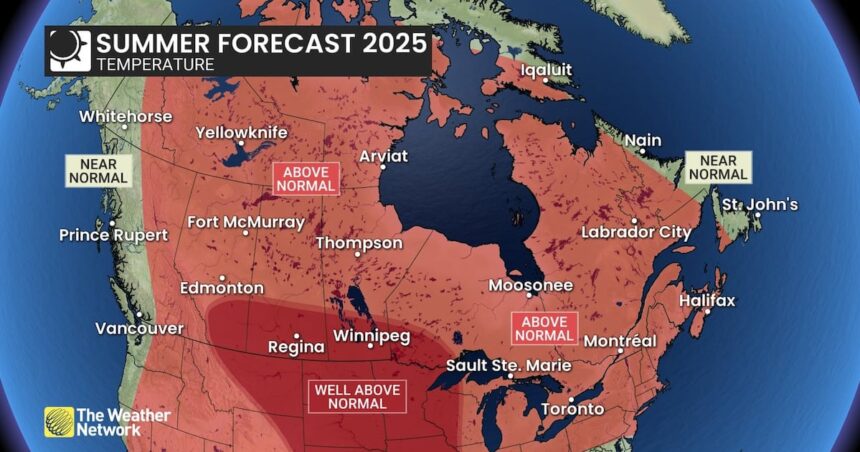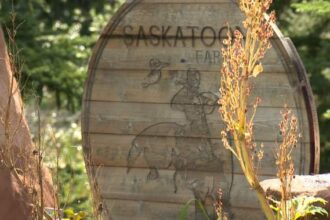The scorching memories of last year’s devastating wildfire season remain fresh in the minds of many Canadians as meteorologists now warn that summer 2024 could bring another extended period of abnormally warm temperatures across most of the country, heightening concerns about drought conditions and fire risks.
According to the latest seasonal forecast from Environment Canada, temperatures are expected to climb above normal levels nationwide between June and August, with particularly intense heat anticipated across the Prairie provinces and into the Northwest Territories.
“We’re looking at a persistent pattern of high pressure that will likely dominate much of central Canada this summer,” explains Dr. Sarah Mitchell, senior climatologist at Environment Canada. “When combined with the ongoing effects of climate change, we’re seeing the conditions that can lead to significant drought development.”
The forecast comes as several regions are already experiencing concerning moisture deficits. Parts of Alberta and Saskatchewan entered spring with soil moisture levels well below average following a winter of reduced snowpack, according to data from CO24 News.
“What’s particularly troubling is the compounding effect we’re seeing,” says Michael Torres, wildfire prevention specialist with Natural Resources Canada. “When you have multiple years of moisture deficits combined with earlier spring melts and extended hot periods, you create ideal conditions for wildfire ignition and spread.”
The drought risk appears most severe across the southern Prairies, where agricultural producers are already implementing contingency plans for potential crop failures. The economic implications could be substantial for Canada’s agricultural sector, which contributes approximately $140 billion annually to the national economy, according to CO24 Business reporting.
Federal officials have begun coordinating emergency preparedness measures with provincial authorities, allocating additional resources for firefighting capacity and implementing stricter fire bans in high-risk areas. The federal government recently announced a $256 million investment in wildfire preparation and response capabilities, a significant increase from previous years.
“We’ve learned valuable lessons from the 2023 wildfire season,” notes Jennifer Collins, spokesperson for Public Safety Canada. “Early coordination between jurisdictions and proactive resource allocation will be critical to managing what could be another challenging summer.”
For urban residents, the forecast also raises concerns about air quality, as smoke from potential wildfires can travel hundreds of kilometers from their source. Last summer, cities as far east as Toronto and Montreal experienced several days of hazardous air quality when smoke from western wildfires drifted across the country.
Health authorities are advising vulnerable populations – including those with respiratory conditions, the elderly, and young children – to prepare for possible smoke events by ensuring access to air purifiers and limiting outdoor activities during poor air quality periods.
Climate scientists point to this forecast as further evidence of Canada’s vulnerability to climate change impacts. The country is warming at approximately twice the global average rate, with the northern regions experiencing even more dramatic temperature increases.
“What we’re witnessing isn’t just a series of unusual years – it’s the new normal under climate change,” explains Dr. Robert Chen, climate researcher at the University of British Columbia. “The increased frequency of extreme weather events we’re experiencing aligns precisely with climate model projections from decades ago.”
Municipal leaders across Canada are increasingly focused on adaptation strategies, with many communities implementing more stringent water conservation measures, enhancing emergency response capabilities, and reconsidering urban planning approaches to reduce vulnerability to climate impacts.
For everyday Canadians, experts recommend practical preparedness steps: creating emergency plans, assembling supplies for potential evacuations, and staying informed about local conditions. Homeowners in wildfire-prone areas are being encouraged to implement FireSmart principles around their properties to reduce combustible materials.
As summer approaches, the question facing communities across the country isn’t just how to respond to the immediate weather challenges ahead, but how to adapt to what increasingly appears to be a fundamental shift in Canada’s climate patterns. How will our society transform its infrastructure, economy, and way of life to thrive in this new reality?










